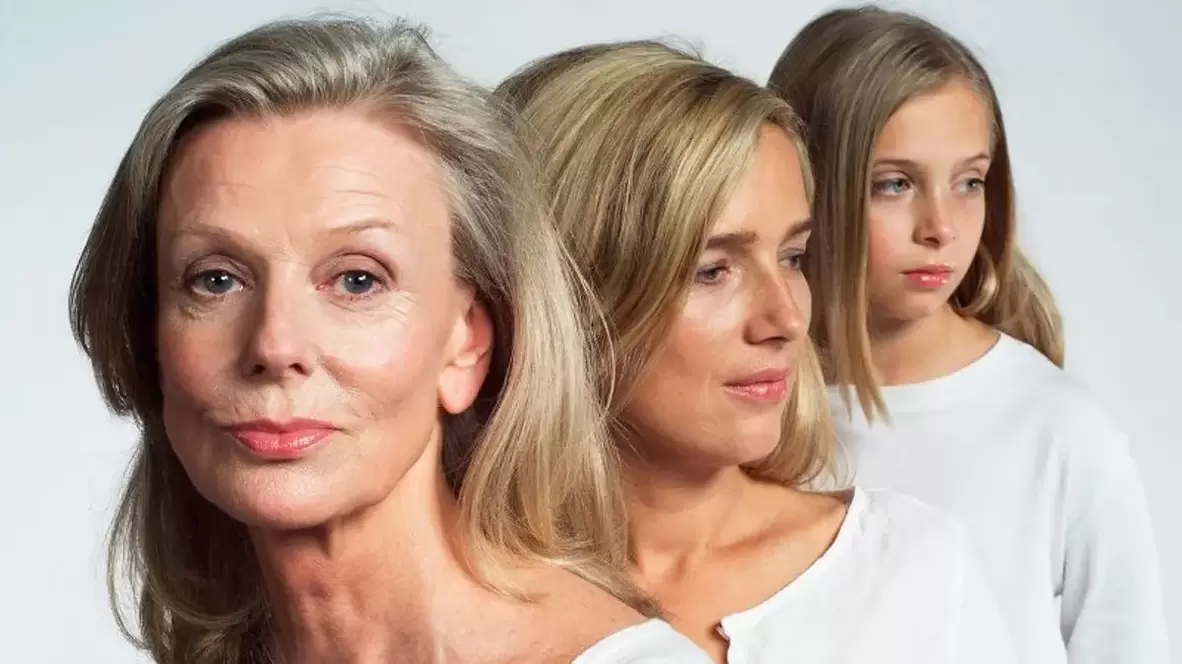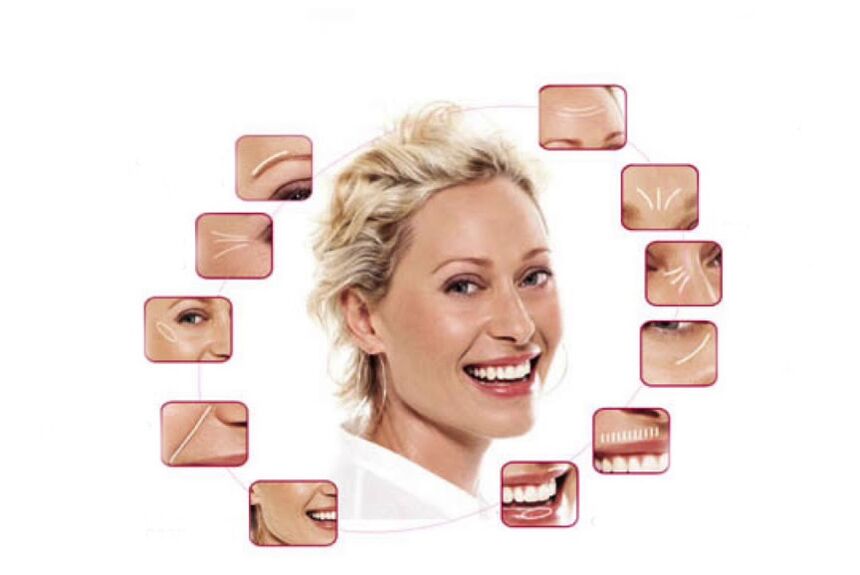
Slowing down the aging process of the skin is the fundamental problem in cosmetology. Until recently, it was believed that the skin began to age around the age of 40, when the first pronounced wrinkles appear. And cosmetics mainly fought wrinkles. However, it is quite obvious that the aging process of the skin begins long before the appearance of visible signs and it begins at the cellular level for about thirty years. Currently, researchers have a large amount of biomedical scientific knowledge on the structure and function of the skin, oxidative stress and its causes, intracellular mechanisms of adaptation and repair, the quality and intensity of intercellular interactions. .
It's accepted for today,that the aging of the skin does not only concern the visible signs: wrinkles, uneven pigmentation, gravitational sagging of the skin, dryness, etc. These are first of all cellular and tissue signs of skin aging, changes in subtle processes occurring in the epidermis and dermis.
The mechanisms of aging affect the most important cell organelles:
- DNA- the most important element of storage and implementation of hereditary information;
- mitochondria- a unique organelle to supply energy to the cell and ensure its survival in difficult conditions;
- cellular membrane- regulator of signal transmission from the outside and selective permeability of substances.
With any external influence on the skin, complex processes are initiated in the skin cells - they exchange information and coordinate a common response to external challenges. These processes are very active in young people. But with age, they fade, a certain imbalance of internal processes occurs, and the skin begins to age. This raises the question of how to effectively help the skin resist aging in young people, adults and the elderly.
All the theories describing the mechanisms of skin aging, and there are more than 300 of them, can be divided into two broad groups - aging based on internal (endogenous) and external (exogenous) factors. Endogenous aging is caused by information encoded in our DNA and there is no way to influence this aspect yet. Exogenous aging is the total result of the cumulative effect of aggressive environmental factors including ultraviolet and infrared radiation, ozone from urban smog, cigarette smoke, etc. A notable change in the study of aging processes from external factors occurred at the turn of the 20th and 21st centuries. Now no one doubts that external factors determine 60-80% of the total volume of aging (data for facial skin). Ultraviolet is recognized as the most dangerous.
The signs of skin aging in figures
Age-related changes usually appear on the outside and signs of skin aging may be noticed. Here is a list of the most common skin changes and how they look. Research in recent years has made it possible to calculate the number of many aging processes.
- The collagen content of the dermis, necessary for the solidity of the skin, decreases by 1% each year after 30 years.
- After 40 years, the skin thins by 1% per year.
- A skin cell restores 10 to 100, 000 DNA mutations in a day, and 2 hours of sun exposure provides up to 1 million mutations.
- 15 minutes of sun exposure depletes the skin's own reserves of antioxidants (mainly vitamins C and E) by 70-90%, requiring at least 2 hours to recover.
- Of all the proteins synthesized in the cell, 40% are produced with errors - uninterrupted functioning of cellular mechanisms for its use and processing is necessary.
- In total, the body contains about 15 g of hyaluronic acid, of which 10 g falls on the skin. A complete renewal of all hyaluronic acid occurs in the body in three (! ) Days - any failure in the work of the skin cells for the synthesis of hyaluronic acid turns into a micro-catastrophe for the skin.
- Decreased elasticity of the stratum corneum and epidermis. With age, the stratum corneum becomes thicker, and the upper layer, on the contrary, thins (from 30 to 70 years - twice). The firmness of the skin decreases and the skin becomes dull.
- Reduce the amount of water in the stratum corneum. With age, the amount of water in the skin changes: 75-70% up to 25 years to 63-65% in the elderly. The skin becomes dry, less dense and the sensitivity of the skin increases.
- Increased skin pigmentation. Over time, due to the negative effects of the sun, age spots appear on the skin.
- With age, the activity of the sebaceous glands decreases. As a result, the skin becomes drier and more vulnerable to free radicals.

The main reason for skin aging is a decrease in the repair rate
All skin functions and regeneration processes are preserved in humans, even in old age. The problem is that their speed slows down. If young skin is able to react to a negative impulse and stop its side effects within 12 hours, then older skin already needs 30 hours. Thus, it is obvious that in an elderly person the recovery processes are extremely slow. That is, the intact skin of a young and an elderly person is also effective as a barrier and protection. The differences become clearly noticeable when the skin is damaged and the need to restore destroyed structures and mechanisms. Considering the fact that our skin is under conditions of continuous aggression from external factors, the older the age, the more intensely the snowball of destruction and "untreated" damage develops. That is, the mature skin does not have time to deal with the damage, and it accumulates and appears as external signs of aging. That is, all signs of aging are "untreated" skin lesions.
Stages of age-related changes in skin and care characteristics
Young skin is differenthigh content of own "youthful molecules", high intensity of recovery processes. Young skin is much denser than mature skin, it is more elastic, its structural fibers, collagen and elastin, are ordered. The cell renewal rate is approximately 28 days. The first age-related skin changes begin to occur from the age of 25. Therefore, the main emphasis in cosmetics in this age group is protection and prevention. It includes protection from ultraviolet rays, support for the water and lipid balance of the skin, the mandatory use of various antioxidants.
Mature skin is differenta decrease in the content of "youthful molecules" and a slowing down of the recovery process. Daily stress becomes more traumatic and destructive for the skin. Signs of skin aging begin to appear on the outside in the form of wrinkles, crow's feet around the eyes, sagging skin on the cheekbones and chin. Here, anti-aging cosmetics must provide not only protection, but also support for their own processes (protective and maintenance cosmetics). The use of substances to maintain cell life (protection of cell membranes, DNA and mitochondria), promote the synthesis of collagen, elastin and hyaluronic acid is topical. It is necessary to strengthen and maintain a high intensity of intercellular communication with the help of regulatory peptides and growth factors.
In old age,massive deficit of recovery mechanisms. The rate of renewal of skin cells after age 55 is greatly reduced and is already 3 to 4 months (28 days before the age of 25). This occurs against the unfavorable background of already accumulated "untreated" injuries. The signs of skin aging become more pronounced - the number and depth of wrinkles increase, the skin becomes drier and duller. Anti-aging cosmetics of this age are the protection, support and replacement of the lost. Active substances of the previous two age groups and theirs can be used - bioflavonoids with phytoestrogenic activity (to replace the level of their own estrogens), cholesterol in a special ratio with ceramides and fatty acids to replenish the lipid barrier, intradermal moisturizers, anti-inflammatory and vascular stabilizing components.
Each of us is different. However, the processes that take place in our skin are defined by nature in the same way for everyone. Including the aging process of the skin. At each age, the degree of manifestation of certain changes is different. Take a closer look. Maybe you will notice some changes today. So, now is the time to act! It is important to select beauty products according to the age and needs of the skin at each stage of life.
Skincare products and specialized treatments will help you slow down the aging process of your skin and keep your skin youthful for years to come. In the abundance of assortment of cosmetics and procedures today, women of any age can choose the right anti-aging products for themselves.














